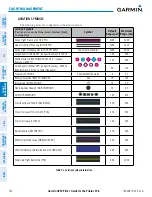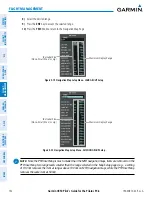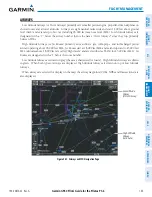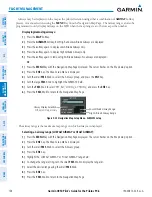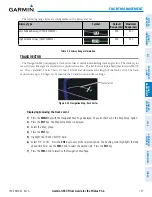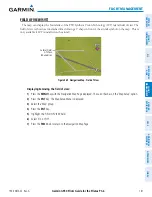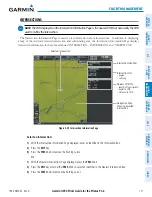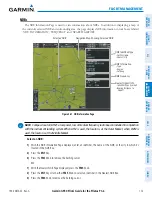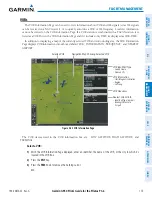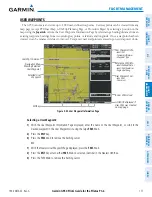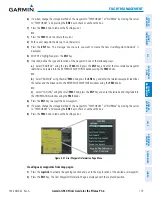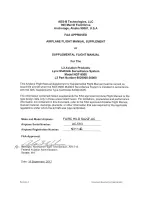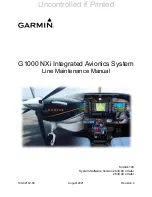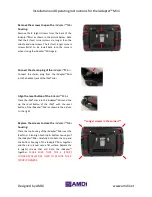
Garmin G950 Pilot’s Guide for the Pilatus PC-6
190-00870-02 Rev. A
164
FLIGHT MANAGEMENT
SY
STEM
O
VER
VIEW
FLIGHT
INSTRUMENTS
EIS
AUDIO P
ANEL
& CNS
FLIGHT
MANA
GEMENT
HAZARD
AV
OID
ANCE
AFCS
ADDITIONAL FEA
TURES
APPENDICES
INDEX
If duplicate entries exist for the entered facility name or location, additional entries may be viewed by continuing
to turn the small
FMS
Knob during the selection process. If duplicate entries exist for an identifier, a Duplicate
Waypoints Window is displayed when the
ENT
Key is pressed.
Figure 5-32 Waypoint Information Window - Duplicate Identifier
Duplicate Message
Identifier with
Duplicates
Duplicate
Waypoints
AIRPORTS
NOTE:
‘North Up’ orientation on the Airport Information Page cannot be changed; the pilot needs to be
aware of proper orientation if the Navigation Map orientation is different from the Airport Information Page
Map.
The Airport Information Page is the first page in WPT group and allows the pilot to view airport information,
load frequencies (COM, NAV, and lighting), review runways, and review instrument procedures that may be
involved in the flight plan. See the Audio Panel and CNS Section for more information on loading frequencies
(auto-tuning). After engine startup, the Airport Information Page defaults to the airport where the aircraft is
located. After a flight plan has been loaded, it defaults to the destination airport. On a flight plan with multiple
airports, it defaults to the airport which is the current active waypoint.
In addition to displaying a map of the currently selected airport and surrounding area, the Airport Information
Page displays airport information in three boxes labeled ‘AIRPORT’, ‘RUNWAYS’, and ‘FREQUENCIES’. For
airports with multiple runways, information for each runway is available. This information is viewed on the
Airport Information Page by pressing the INFO softkey until
INFO-1
is displayed.

